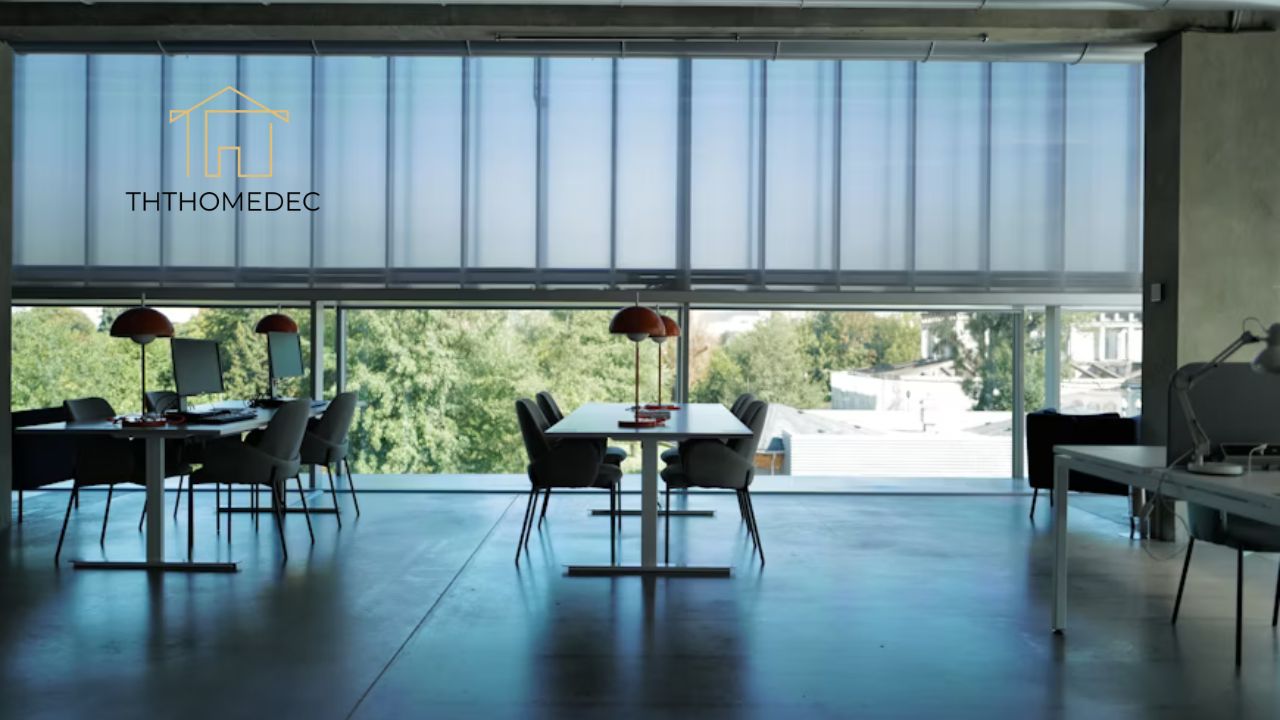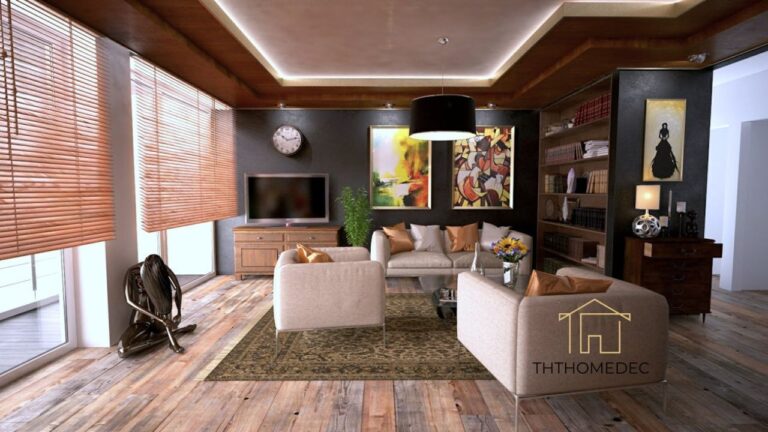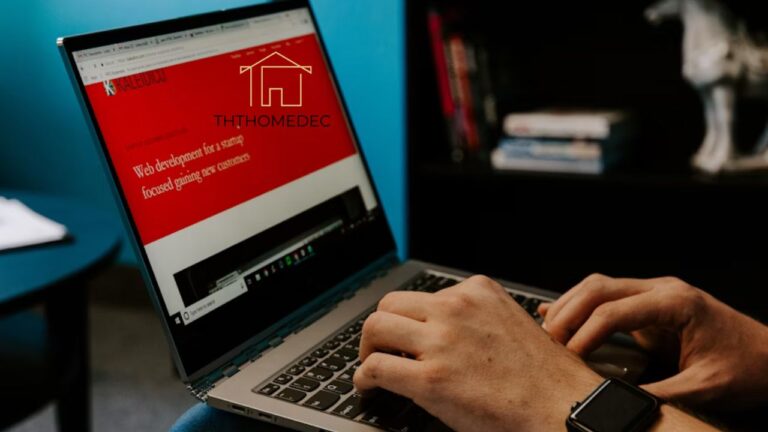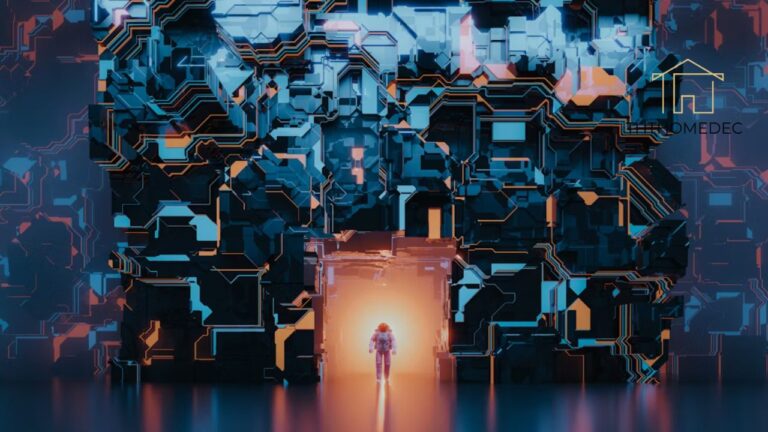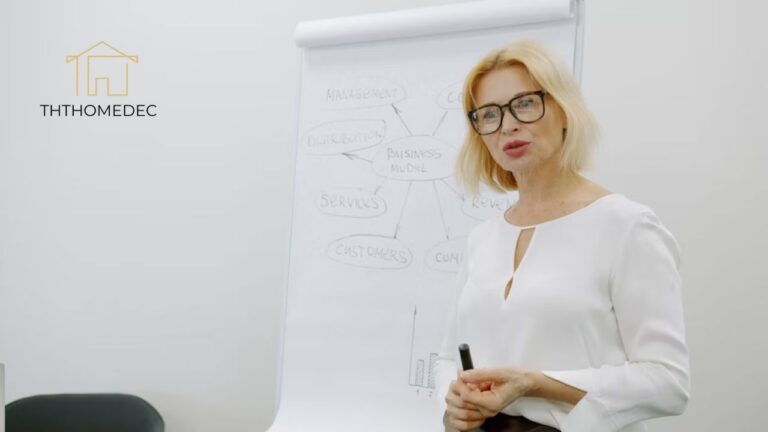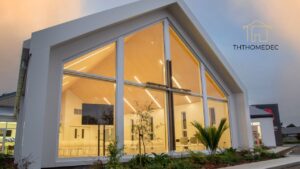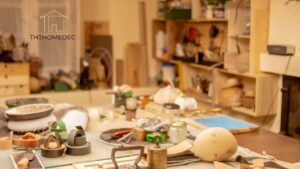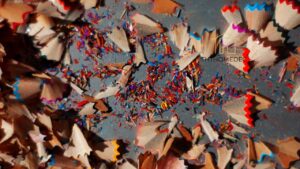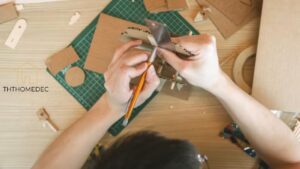Have you ever walked into a room and felt instantly at ease, energized, or inspired? That powerful feeling is the magic of interior design. Exploring why interior design is interesting mintpaldecor reveals how it’s not just about making spaces pretty; it’s a fascinating blend of art, psychology, and practical problem-solving that dramatically shapes our daily lives. It’s about creating environments that tell a story and support our well-being.
Interior design is a deeply personal and transformative field. It has the incredible ability to turn a simple house into a cherished home, a sterile office into a hub of creativity, or a quiet café into a bustling community spot. This process is about understanding human needs and translating them into a physical reality, which is a truly captivating challenge. At Mintpaldecor, we are passionate about unlocking this potential in every project we touch.
This comprehensive guide will delve into the many layers that make this profession so compelling. We’ll explore its psychological impact, the creative processes involved, and how it reflects cultural trends. We will uncover why interior design is interesting mintpaldecor by examining its history, its future, and its profound influence on how we experience the world around us.
Mintpaldecor at a Glance
| Feature | Details |
|---|---|
| Company Name | Mintpaldecor |
| Core Services | Full-Service Interior Design, E-Design, Home Staging, Color Consultation |
| Unique Selling Prop. | Human-centered design approach, blending modern aesthetics with timeless comfort and sustainability. |
| Founder | [Founder’s Name – Placeholder] |
| Years in Business | Over a decade of transforming spaces. |
| Average Rating | 4.9/5 stars based on client reviews. |
The Psychology Behind the Space: More Than Just Aesthetics
One of the core reasons why interior design is interesting mintpaldecor is its deep connection to human psychology. The spaces we inhabit have a direct and measurable effect on our moods, behaviors, and even our physical health. This isn’t just a vague feeling; it’s a field of study known as environmental psychology.
Designers are, in essence, choreographers of emotion. They use color, light, texture, and layout to evoke specific feelings. A room with warm, soft lighting and plush textures can promote relaxation and intimacy. In contrast, a space with bright, cool lighting and clean lines can foster focus and productivity.
Color Psychology in Action
Color is one of the most powerful tools in a designer’s arsenal. Our brains are hardwired to respond to different colors in distinct ways.
- Blue: Often associated with calmness and serenity, blue is a popular choice for bedrooms and bathrooms. Studies have shown it can lower blood pressure and slow heart rate.
- Yellow: This vibrant hue can evoke feelings of happiness and energy. It’s great for kitchens or dining rooms where you want to create a lively, social atmosphere. However, too much yellow can cause anxiety.
- Green: Representing nature, green is restorative and balancing. It’s a versatile color that can bring a sense of tranquility and renewal to any room.
- Red: A bold and passionate color, red stimulates energy and excitement. It can be effective in small doses to create a focal point but can feel overwhelming if overused.
Understanding these nuances is fundamental to exploring why interior design is interesting mintpaldecor. It transforms the act of choosing a paint color from a simple preference to a strategic decision aimed at enhancing the emotional quality of a space.
The Impact of Layout and Flow
The arrangement of furniture and the flow of a room also play a critical psychological role. A cluttered, poorly organized space can lead to feelings of stress and being overwhelmed. Our minds crave order and clarity.
A well-designed layout, on the other hand, creates what designers call “flow.” This means you can move through a space easily and intuitively, without obstacles. This sense of effortless movement contributes to a feeling of calm and control. We at Mintpaldecor believe this is a key reason why interior design is interesting mintpaldecor; it’s about solving spatial puzzles to improve daily life.
Consider the concept of “prospect and refuge.” This theory suggests humans are instinctively drawn to spaces that offer both a clear view of their surroundings (prospect) and a protected, enclosed area to retreat to (refuge). An open-plan living area with a cozy reading nook in the corner is a perfect example of this principle in action.
A Creative Fusion: The Art and Science of Design
Interior design is a unique discipline that sits at the intersection of art and science. It requires the soul of an artist and the mind of an engineer. This duality is another fascinating aspect that makes the field so rich and complex.
The Artistic Element: Self-Expression and Storytelling
At its heart, design is a form of self-expression. A person’s home is a canvas, reflecting their personality, history, and aspirations. A designer’s job is to act as a skilled interpreter, translating a client’s inner world into a tangible, three-dimensional environment.
This process involves:
- Developing a Concept: Every great design starts with a core idea or story. Is the space meant to be a serene sanctuary, a vibrant family hub, or a sophisticated entertainment area?
- Creating Harmony and Balance: Designers use principles like symmetry, asymmetry, rhythm, and proportion to create a visually pleasing composition. It’s like composing a piece of music, where every element must work together in harmony.
- Playing with Texture and Material: The tactile quality of a space is just as important as its visual appearance. The contrast between a rough-hewn wooden table, a soft velvet sofa, and a sleek metal lamp adds depth and interest. This is a subtle yet powerful reason why interior design is interesting mintpaldecor.
The Scientific Element: Precision and Problem-Solving
Beyond the artistry, interior design is grounded in technical knowledge and precise execution. Designers must be meticulous problem-solvers.
This scientific side includes:
- Space Planning: Using software and drafting skills, designers create detailed floor plans that optimize every square inch. They must consider ergonomics—designing for human comfort and efficiency—and adhere to building codes and regulations.
- Understanding Materials: A designer needs to know the properties of countless materials. Which flooring is durable enough for a high-traffic area? What fabric is resistant to stains and fading? Which countertop material is both beautiful and non-porous?
- Lighting Design: This is a highly technical field in itself. Designers calculate the required amount of ambient, task, and accent lighting for a room, considering factors like bulb temperature (kelvins) and brightness (lumens).
This blend of creativity and technical rigor is a core component of why interior design is interesting mintpaldecor. It’s a constant challenge to balance aesthetic vision with practical constraints.
A Reflection of Culture and History
Interior design is not created in a vacuum. It is a mirror that reflects the values, technologies, and social structures of its time. Studying the history of design is like taking a journey through human civilization.
From Ancient Roots to Modern Movements
The desire to beautify our surroundings is as old as humanity itself. Cave paintings were a form of interior decoration. The Romans perfected the use of mosaics and frescoes, while the Egyptians crafted ornate furniture for their pharaohs.
The evolution of design styles tells a story:
- Gothic (12th-16th Century): Characterized by ornate details, pointed arches, and a sense of verticality, reflecting the religious fervor of the era.
- Renaissance (14th-17th Century): A rebirth of classical ideas from Greece and Rome, emphasizing symmetry, proportion, and harmony.
- Baroque (17th Century): Lavish, dramatic, and emotional, with a love for opulent materials like gold and velvet, designed to display wealth and power.
- Mid-Century Modern (20th Century): A rebellion against ornament, focusing on clean lines, organic forms, and the integration of indoor and outdoor spaces. This style celebrated new materials and manufacturing techniques developed after World War II.
Understanding this lineage adds incredible depth and shows why interior design is interesting mintpaldecor. Each piece of furniture, each color palette, has a story and a history.
Design as a Cultural Signifier
Today, interior design continues to reflect our globalized, tech-driven culture. Trends like minimalism speak to a desire to declutter our lives in an overstimulated world. The rise of biophilic design—incorporating natural elements like plants and natural light—shows our growing awareness of the need to reconnect with nature.
The emphasis on sustainable and eco-friendly materials reflects a collective concern for the planet. Upcycling and using reclaimed materials are not just budget-friendly choices; they are ethical statements. This connection to broader societal movements is a profound reason why interior design is interesting mintpaldecor.
The Mintpaldecor Approach: Human-Centered and Timeless
At Mintpaldecor, our philosophy is rooted in a deep appreciation for all these facets of design. We believe great design should be beautiful, functional, and deeply personal. Exploring why interior design is interesting mintpaldecor is our daily mission, and it informs every choice we make.
Our Design Process
Our process is collaborative and client-focused. We don’t impose a signature style; instead, we work to uncover yours.
- Deep Dive & Discovery: We start by listening. We want to understand your lifestyle, your habits, your passions, and your pain points with your current space. This is the most crucial step.
- Conceptualization: Based on our discovery session, we develop a comprehensive design concept. This includes mood boards, color palettes, and preliminary space plans that tell the story of your future home.
- Detailed Design & Sourcing: This is where the vision starts to become a reality. We create detailed 3D renderings, select furniture, fabrics, and finishes, and work with trusted artisans and vendors. Our focus on quality and craftsmanship is part of why interior design is interesting mintpaldecor.
- Execution & Installation: We manage the entire project from start to finish, coordinating with contractors, overseeing timelines, and ensuring every detail is executed perfectly. The final reveal is the moment all the planning and passion come together.
Client Experiences with Mintpaldecor
We are proud of the relationships we build and the homes we help create. The feedback from our clients is the ultimate measure of our success.
“Working with Mintpaldecor was a dream. They took our jumbled ideas and turned them into a cohesive, beautiful, and incredibly functional home. They understood us better than we understood ourselves! It’s not just designed; it’s us.” – Jessica L., 5/5 Stars
“I was always intimidated by interior design, but the team at Mintpaldecor made it so accessible and fun. They explained the ‘why’ behind every decision, which made me appreciate the process so much more. Our home feels like a sanctuary now.” – Mark T., 5/5 Stars
These experiences highlight why interior design is interesting mintpaldecor. It’s about the positive, lasting impact we can have on people’s lives. We are constantly reminded of the power of a well-designed space. This continuous learning curve helps explain why interior design is interesting mintpaldecor.
The Future of Interior Design
The world of interior design is constantly evolving, driven by new technologies and shifting societal values. This forward momentum is yet another reason why interior design is interesting mintpaldecor. We are excited by what the future holds.
Technology’s Growing Influence
- Virtual and Augmented Reality (VR/AR): These technologies are revolutionizing how we visualize spaces. Clients can now “walk through” their newly designed home before a single wall is painted, allowing for more confident decision-making.
- Smart Homes: The integration of technology into the home is becoming seamless. Designers now need to plan for smart lighting, automated blinds, voice-activated assistants, and integrated security systems. This adds a new layer of complexity and opportunity.
- 3D Printing: This technology allows for the creation of custom furniture and decorative objects with unprecedented speed and precision, opening up new possibilities for personalization.
The intersection of technology and creativity is a key part of why interior design is interesting mintpaldecor.
A Focus on Wellness and Sustainability
The future of design is also increasingly focused on health and sustainability.
- Wellness Design: This goes beyond aesthetics to create spaces that actively support physical and mental health. This includes using non-toxic materials, designing for good air quality, incorporating ergonomic furniture, and maximizing natural light.
- Sustainable Practices: There is a growing demand for eco-friendly design. This involves using recycled or reclaimed materials, sourcing from local artisans to reduce carbon footprint, and choosing durable items that won’t end up in a landfill. The ethical dimension adds to why interior design is interesting mintpaldecor.
As a firm, Mintpaldecor is committed to staying at the forefront of these trends, continuously learning and adapting our practices. The dynamic nature of the field is exactly why interior design is interesting mintpaldecor. We believe our dedication to evolution is why interior design is interesting mintpaldecor. For our team, the challenge of integrating new ideas is why interior design is interesting mintpaldecor. The potential for innovation is why interior design is interesting mintpaldecor.
The ability to shape environments that are not only beautiful but also smarter, healthier, and kinder to our planet is a powerful motivator. This holistic approach is the essence of modern design and a primary reason why interior design is interesting mintpaldecor. The journey of discovery is why interior design is interesting mintpaldecor. Our clients’ satisfaction shows why interior design is interesting mintpaldecor. In every project, we see why interior design is interesting mintpaldecor.
FAQs: Your Questions Answered
We get a lot of questions about our work and the field in general. Here are some of the most common ones.
What is the biggest misconception about interior design?
Many people think interior design is just about decorating—picking out pillows and paint colors. While aesthetics are important, a true designer is a trained professional who deals with space planning, building codes, ergonomics, and project management. The depth of the profession is a big part of why interior design is interesting mintpaldecor.
How do I find my personal design style?
Start by gathering inspiration. Use platforms like Pinterest or Instagram to save images of rooms you love. Look for common themes in what you save. Do you gravitate towards clean lines and neutral colors (minimalist), or rich textures and eclectic pieces (bohemian)? Don’t feel pressured to fit into one box; most people are a mix of styles.
Is hiring an interior designer only for the wealthy?
Not at all! Designers offer a range of services to fit different budgets. While a full-service design for an entire home is a significant investment, many designers (including Mintpaldecor) offer services like e-design or single-room consultations at a more accessible price point. A designer can also save you money by preventing costly mistakes and providing access to trade discounts.
What is the difference between an interior designer and an interior decorator?
This is a great question. An interior designer typically has formal education and training in space planning, architecture, and technical drawing. They can work on projects from the ground up, even moving walls. An interior decorator focuses on the surface-level aesthetics—furnishings, color, and accessories—to beautify an existing space.
How does Mintpaldecor incorporate sustainability into its projects?
We prioritize sustainability by sourcing from vendors who use eco-friendly materials and ethical production methods. We love incorporating vintage and reclaimed pieces to reduce waste and add character. We also design for longevity, choosing timeless, durable pieces over fast-fashion trends. This commitment is central to why interior design is interesting mintpaldecor.
In conclusion, the world of interior design is a rich tapestry woven from threads of psychology, art, science, and culture. It’s a field that demands both creativity and precision, and its ultimate goal is to improve the human experience. At Mintpaldecor, we are endlessly fascinated by this interplay, and it is our privilege to bring this passion to every space we transform. The profound impact on people’s lives is truly why interior design is interesting mintpaldecor.
Admin Recommendation
LWMFCrafts Inventive: A Creative Revolution in Crafting
The Enchanting World of LWMFCrafts: A Deep Dive into Paper Artistry

